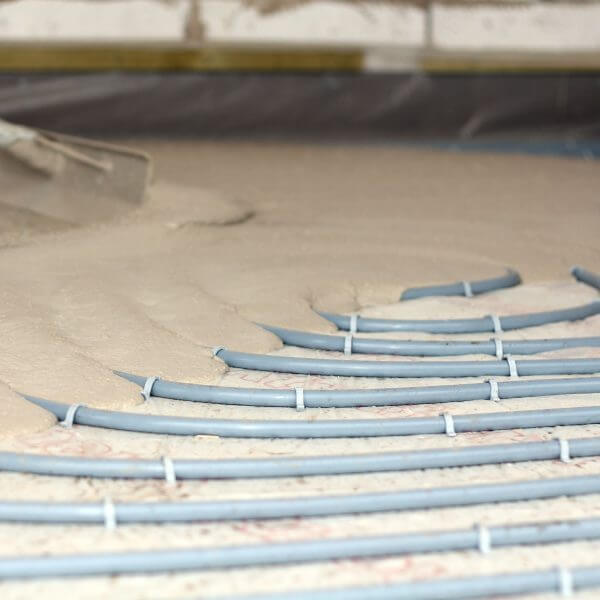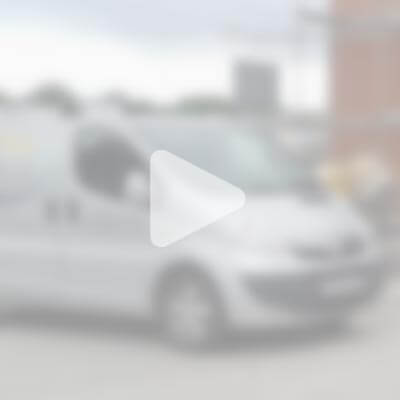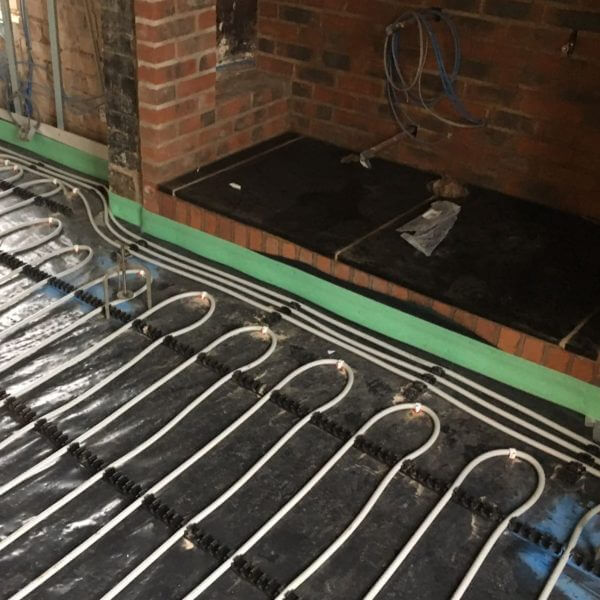4 Reasons to Choose Liquid Screed Over Traditional Sand & Cement
Screeding is an amazing way to refurbish ageing solid concrete floors and bring them back to a smooth and level finish. It’s been used in hundreds of refurbishment projects and as a discrete cover for floor insulation or underfloor heating pipes.
There are several types of screed, from traditional sand & cement screeds to the more modern liquid screed. This in turn is split into two types, cement-based concrete and anhydrite-based (also known as calcium sulphate).
Our liquid screeders in Shropshire have been pouring liquid cement and anhydrite screeds for over a decade. In fact, part of why we began trading as EasyFlow was because of our desire to branch away from laying traditional screed. Here’s why:
1. It’s the Quickest Drying Screed
There is an illusion that traditional screed dries faster than liquid screed, on account it has less water content. But surprisingly, liquid screed has the faster screed drying time in standard conditions. Both dry at a rate of 1mm per day, depending on local conditions. However, traditional screed has to lie for 7 days before it can be walked on, whereas liquid can be walkable within 24-48 hours.
How so? Liquid screed may have more water content to start with, but flowing screeds are less dense, letting the water content evaporate at a faster rate. This evens out their drying rate, at least for standard formulations of liquid screed.
For faster natural screed drying times, formulations like Gyvlon Eco FD and Longfloor Integracure are quick drying screeds. These products have been essential on many of our commercial liquid screed projects throughout the Midlands, where time is a constraint put on our team.
2. It’s Quicker to Lay
Drying time isn’t the only metric to measure floor screeds by, laying time is also a concern. This is where liquid screed excels over traditional, as it’s very quick to pour and many formulations can be self compact and level without need for a power floater. At most, it will need to be tamped with a dapple bar to smooth it down and eliminate air bubbles.
Up to 1000-2000m² of liquid screed can be poured in a single day by one team, and quickly levelled to the right datum points. In one of our larger jobs for 66 holiday lets, we were able to screed 4 plots per visit, in conditions that were not ideal. Traditional screed on the other hand can be laid to a rate of 100-200m² per day with one team.
3. It’s Best for Underfloor Heating
Both traditional and liquid screed are very good products to cover an underfloor heating setup, offering even heat diffusion and transfer from the pipes to the room. But between the two types, liquid is the better product as it fills all gaps between the pipes, leaving a void-free finish without much additional effort.
With traditional screed, great care has to be taken to avoid and eliminate air pockets in the screed. At best, an air pocket reduces the efficiency of heat transfer, at worst it can crack the screed.
4. It Can Help You Reach Carbon Targets
Anhydrite screed, especially the Gyvlon Eco formulation, is made from naturally occurring gypsum. This material is easily recyclable and overall requires less energy to process into the final product. Approximately 36% of a Gyvlon Eco screed is made of recycled content.
This reduced carbon content in the creation of the product equals a smaller carbon footprint in the construction process. This is essential when pursuing eco-friendly building projects and ensuring construction in the UK achieves net-zero.




Where To Find Us